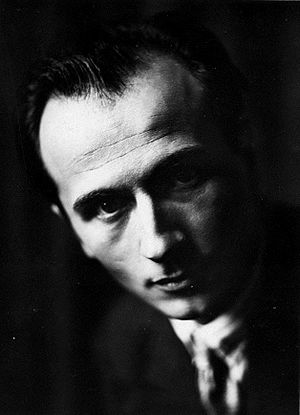Camillo Berneri facts for kids
Quick facts for kids
Camillo Berneri
|
|
|---|---|
 |
|
| Born |
Luigi Camillo Berneri
May 20, 1897 Lodi, Lombardy, Kingdom of Italy
|
| Died | May 5, 1937 |
| Alma mater | University of Florence |
| School | 20th-century philosophy |
|
Main interests
|
Anarchism, Antifascism |
Camillo Berneri (also known as Camillo da Lodi) was an Italian professor and writer. He was born on May 28, 1897, and became a strong supporter of anarchist ideas. Anarchism is a political idea that believes in societies without rulers or forced governments. He was also a brave fighter against fascism, a political system where one leader has total power. Camillo Berneri was tragically killed during the Spanish Civil War on May 5, 1937.
Contents
Biography
Early Life and Education
Camillo Berneri was born in Lodi, Italy, on May 20, 1897. His family was very involved in politics and education. His father was a local official, and his mother was a teacher. Camillo had a tough childhood and faced several illnesses.
His family moved often, living in cities like Milan, Palermo, and Reggio Emilia. In Reggio Emilia, when he was 15, Camillo joined a youth socialist group. He later left this group because he felt it was too slow and not active enough. He then became interested in anarchism. He believed that the socialist ideas about workers were not realistic.
In 1917, Camillo married Giovanna Caleffi. Soon after, he joined the military. However, he had to leave because of health problems and his strong anti-war views. He was even sent to a military court twice. After leaving the army in 1919, he started working with anarchist newspapers. He also helped create the Union of Italian Anarchists.
Camillo studied at the University of Florence. He became a philosophy professor there and later taught at the University of Camerino.
Fighting Fascism
When fascists took control of Italy, Camillo Berneri refused to support their rule. Fascism is a type of government where a single powerful leader controls everything. He strongly disliked fascism and stayed in touch with other anti-fascist groups.
As the fascist government became stricter, Camillo was forced to leave Italy in May 1926. He moved to France. His wife, Giovanna Berneri, and their daughters, Marie Louise Berneri and Giliana Berneri, joined him there.
Spanish Civil War and His Ideas
When the Spanish Civil War started, Camillo Berneri was one of the first to go to Catalonia, Spain. This area was a center for a revolution led by anarchist groups. He joined many other Italian and international anti-fascist fighters.
Camillo helped organize the first group of Italian volunteers. They fought on the Aragon front against fascist forces. He bravely defended his position in a battle near Huesca in 1936. After getting sick, he returned to Barcelona. There, he started a newspaper called Class War and worked for an anarchist radio station.
Berneri strongly supported the Spanish Revolution. He believed that to defeat fascism, people needed to fight against capitalism and create a new society. He argued that the war and the social revolution were connected. He said that winning the war meant changing society, not just military battles.
He also disagreed with anarchist groups joining the government. He worried that the revolutionary ideas in Catalonia were becoming isolated. He wrote a book called Thought and Battle in 1936. In it, he warned about the dangers of Stalinist influence and criticized the "anarchist government." He suggested ideas like declaring Morocco independent to weaken fascism, but his ideas were not followed.
His Assassination
Camillo Berneri began to speak out against the harsh actions of the Stalinists in Spain. Many non-communists and anarchists were being arrested or killed. On May 5, 1937, Camillo Berneri and his friend Francesco Barbieri were taken from their home by plainclothes police. Their bodies were later found, shot dead.
After Camillo's death, a socialist leader named Pietro Nenni said that Berneri was assassinated, not killed in battle. Camillo's wife, Giovanna Berneri, later raised the children of another fallen anarchist fighter.
Family
Camillo Berneri was married to Giovanna Berneri. They had two daughters, Marie-Louise Berneri and Giliana Berneri. All of them also believed in anarchist ideas.
See also
 In Spanish: Camillo Berneri para niños
In Spanish: Camillo Berneri para niños
- Anarchism in Italy


